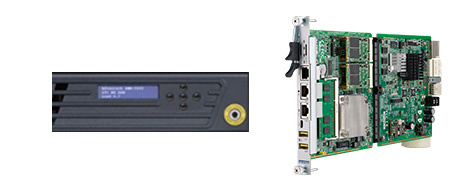Our IPMI implementation is built on a unified software platform supporting several CPU architectures from Cortex-M3 to ARM9. This allows us to source multiple vendors, offering a wider choice of devices for the product range. Implementation of a well defined abstraction layer provides us with all the essentials needed, such as timers, semaphores, tasks and other features provided by a slim operating system, while it liberates us from code dependencies.
PICMG 3.0, AMC.0, and MTCA.0 base their hardware management on IPMI 1.5 with PICMG-specific extensions. However, OEMs often require special features. IPMI message handling and other key elements of our IPMI solution are designed to maximize flexibility. This allows us to add more features without rewriting a lot of code and makes custom feature implementation much easier.
We support HPM.1-compliant updates for programmable components including HPM.2 and HPM.3 extensions. For advanced remote configuration, Advantech-specific features can remotely modify BIOS settings and switch between sets of customer-defined settings and allow remote IPMI-based access to the system console. For maximum reliability we support automatic BIOS failover. Advantech’s time sync feature allows options for system time synchronization between OS, BMC, and other components like the ATCA Shelf Manager.
The SMM-5060, a new breed of Advanced Shelf Management Module, brings added value system control and service processing to the Netarium™ ATCA v2-Series. Also deployed in the Netarium™ e-Series of eATCA systems, it brings a plethora of new capabilities to enhance customer's platform management options.

Advantech understands the needs of their datacom customers who want a networking platform to be managed like a single network element rather than a collection of blades within one chassis.
The SMM-5060, at the core of our ATCA platform management approach makes ATCA look like a big appliance and is able to support a consistent management view across our customers’ full product line. This means OEMs utilizing appliances for their entry and mid range networking gear will find it surprisingly easy to add an ATCA based system as an extension of their product line at the high end.
Advantech’s SMM-5060 ATCA Shelf Manager features an Intel® Atom™ processor C2000 which brings added value system control and service processing to ATCA and eATCA systems, and can be used as a centralized service access point or blade boot server. The new processor’s System On Chip (SoC) features enable encryption and decryption of external management traffic in business and mission critical systems. The SMM-5060 has been designed to maximize management flexibility in multi-blade systems with a software framework to facilitate the addition of customer and custom applications for specialized platform management in high-end networking gear.
Customizable shelf LCDs can be built into the chassis to further enhance the appliance-style look and feel. Connected to the active shelf manager and/or the x86 management node, LCD functionality is completely customizable and can display information such as system statistics or status to onsite technicians.
In fact, Advantech offers an extensive set of customizable enhanced features to OEMs allowing them to adapt platform management functionality just the way they want it. The following two examples include SoL Proxy and Advanced BIOS Management (ABM).
Customers can now benefit from a single service access point connected to just one management port in their network. SoL Proxy runs on the Shelf Manager and establishes an SoL session with each individual blade inside the system. The software buffers all console output and forwards a single active console to an external client. The external client now only needs to establish a single protected SSH session with the SoL Proxy instead of manually establishing fourteen SoL sessions to the blades.
All Advantech blades are able to store multiple BIOS configurations and the system manager is designed to select a specific pre-configured set to use for the next boot. For example, one set can be used to boot a BIOS optimized for control plane processing, one set for firewalling, one set for DPI and another for service/diagnostics. This feature gives the ability to dynamically distribute workloads across identical Intel® architecture ATCA blades and will help equipment vendors to build software definable network elements in Network Function Virtualization scenarios.